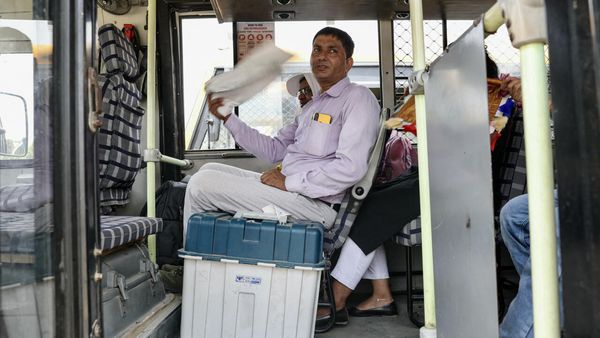
Australia’s economy eked out modest growth at the end of 2023 as consumers drew down savings to keep spending, fuelling hopes of a near-term rebound as inflation ebbs, tax cuts arrive and the Reserve Bank starts cutting interest rates.
The country’s gross domestic product in the December quarter posted a 0.2% rise compared with the previous three months, the Australian Bureau of Statistics reported on Wednesday. At an annual rate, GDP rose 1.5%.
Economists had expected quarterly growth to maintain at its 0.2% pace in the final three months of 2023. Compared with a year earlier, they expected 1.5% growth – also matching the official outcome.
The September quarter’s growth pace was revised higher to 0.3%. As a result, GDP slowed has slowed for the past five quarters but has remained positive since the September quarter of 2021.
As expected, a rise in exports and a drop in imports contributed the most to the quarterly growth tally, at 0.6 percentage points. A drop in stocks held by companies shaved 0.3% to be the main drag.
Households managed to increase overall spending 0.1% while cutting back on discretionary outlays. Rising income and additional government spending on benefits also helped lift the household saving-to-income ratio to 3.2% – ending two years of falls.
The treasurer, Jim Chalmers, had been preparing the public for “quite weak” economic growth from the December quarter, a period that included the RBA’s 13th and possibly last interest rate rise since it began hiking the cash rate in May 2022.
“Addressing inflation is still our primary concern,” Chalmers said. “But these numbers show that the balance of risks in our economy is shifting from inflation to growth.”
The headline growth figure, though, has been buoyed by Australia’s swelling population. Including the December quarter, per capita has been flat or falling for each of the past four quarters, and was 1% lower for the year.
As with other rich nations, Australia has been stabilising after the Covid pandemic initially sent the economy into a tailspin then a sharp recovery as stimulus spending kicked in. Disruptions to supply chains sparked a jump in prices made worse by Russia’s invasion of Ukraine two years ago.
Australia’s 1.5% annual GDP growth compared favourably with many other rich nations. The US clocked 3.1% growth in 2023, while the Euro-area posted 0.1% growth, Canada 0.5% and Japan 1%. The UK’s economy shrank 0.2% last year, according to Economist data.
The RBA wants to bring inflation back to its 2%-3% target range over time with higher interest rates while retaining most of the surge in employment. A too-rapid slowdown in the economy, though, will foster more criticism that its November rate rise was excessive.
The central bank’s latest forecasts, released last month, assumed GDP growth in the December quarter would come in at 1.5%. It will slower further to 1.3% by June before quickening to 1.8% by the end of 2024.
Market reaction was limited as the GDP figures were largely as expected. The dollar remained at about 65 US cents and stocks were holding on to modest losses during morning trade.
Deloitte Access Economics partner Stephen Smith said “Australia is not in recession but many Australians are”.
“Excluding the pandemic and the impact of the GST, this is the slowest rate of economic growth since the recession of the early 1990s,” Smith said, adding that Wednesday’s figures were “further evidence that the November 2023 interest rate hike by the RBA was unnecessary”.
“Another rate rise would cruel the economy – and Deloitte Access Economics expects to see 100 basis points of cuts in 2024-25,” he said. “Monetary and fiscal policy need to pivot away from containing inflation to stimulating economic growth.”
Private business investment rose 0.7% in the December quarter, driven 5% higher by non-dwelling construction, the ABS said. Firms, though, cut spending on machinery and equipment by 1.3%, the first drop since September 2022 with farmers leading the retreat.
Public investment was also a drag on growth, declining 0.2% also for the first quarterly drop since the July-September quarter of 2022, the ABS said.







